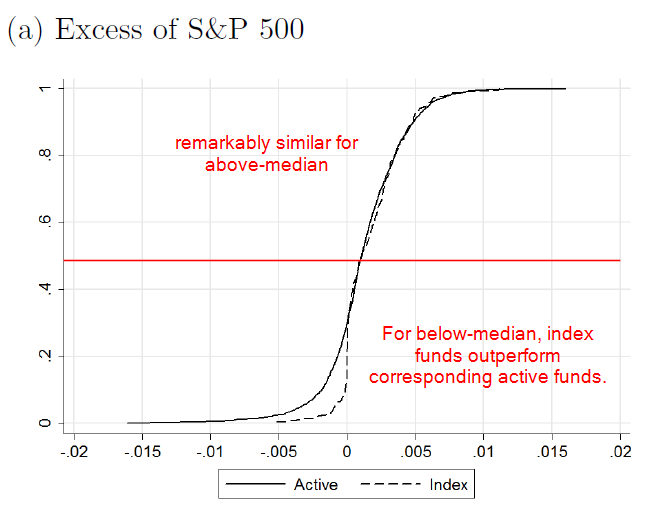Key differences between actively managed funds and active ETFs The Globe and Mail
Post on: 11 Сентябрь, 2015 No Comment

3A+TD+and+CIBC+raise+their+dividends /% CIBC is latest to Canadian bank beat expectations, while TD’s adjusted earnings roughly met estimates. As Andrew Bell reports, both banks are also raising their dividends. BNN Video
Any comparison between the two product types is flawed if it fails to grasp some nuanced differences between them.
Although the two investment vehicles are similar and are governed by the same set of regulations in Canada, active ETFs are distributed via the Toronto Stock Exchange, whereas active mutual funds rely on more direct channels, such as advisers and brokerages. Here are a few additional differences:
Active ETFs are exchange-listed instruments that trade intra-day, offering liquidity throughout the trading day. By contrast, active mutual funds transact only once, at the end of the trading day, when their net asset value (NAV) is calculated.
Being able to manipulate the level of exposure in real time makes some investors look at active ETFs more favourably than mutual funds, said Michael Cooke, head of distribution for PowerShares Canada at Invesco Canada Ltd.
“Certainly, post-2008 financial crisis, investors started assigning much greater premium to the ability to transact at any time during the trading day,” he said. “There’s always a certain population of investors that desires to have the assurance of intra-day liquidity should they need to access it.”
However, that makes active ETFs more conducive to speculative trading, so investors should exercise caution, said Marie DeLauretis, a CFP and independent wealth management professional at DeLauretis Wealth Management/Desjardins Financial Security Investments Inc. in Calgary. “If investors. feel the sky is falling in the markets and they need to move to cash positions immediately, then active ETFs are the way to go,” she said. “However, investors acting on emotions tend to be irrational during volatile times.”
Kevin Gopaul, a senior vice-president and chief investment officer at Bank of Montreal’s Global Asset Management, adds that the liquidity of an active ETF and a mutual fund is the same, except in times of market crisis or when liquidity is scarce.
Active ETFs are trying to maintain some of the key virtues of ETFs and one of them is transparency around holdings, or contents of an investment portfolio. Mutual funds don’t strive for that. “In portfolio construction, the more information you have, [the better] you can manage your exposure,” Mr. Gopaul said.
Mr. Cooke adds that “some investors prefer to have that visibility to be able to make a more informed decision.”
Ms. DeLauretis, however, isn’t convinced that greater visibility of holdings plays a major part in decision making. “I truly believe that many investors don’t have the time, or inclination, to know what securities are in their ETFs or mutual funds on a daily basis,” she said. “I feel that fees, performance and risk play a larger role in decision making.”
Another distinction is fee differential. “ETFs are cheaper because they are distributed through a more efficient system of a stock exchange,” Mr. Gopaul said. “[But] a mutual fund company has to pay the wholesaler and the investment adviser to distribute their product to the end user, and there are costs associated with that.”
He conceded, though, that during a low-return environment and uncertain times, people “like my mom and dad” need financial intermediation.
Ms. DeLauretis argued that a mutual fund’s higher fees are justified by the additional value they bring.
“Yes, the management expense ratio (MER) of a mutual fund, typically, is higher, but assuming it was purchased through an adviser or a bank representative, the investor is also receiving wealth management guidance,” she said. “That includes reviewing estate planning needs, insurance planning and protection, cash flow and debt management, financial advice pertaining
to children and parents and lifestyle planning.”
In a low-yield environment, though, there is a heightened sensitivity to costs and net returns, countered Mr. Cooke. “For example, the category average [of MER] for actively managed bond mutual funds is 72 basis points, but for the actively managed bond ETF it’s 53 basis points,” he said. “So in a world of 2 per cent to 3 per cent yields in bond markets, the lower-cost nature of active ETFs might incline some investors to pick them over active mutual funds.”
What to choose
Active ETFs work more favourably for investors who want to trade frequently, Mr. Cooke said, including those who are looking to exploit short-term trends in the market. That’s “not necessarily the long-term individual investor,” he said.
Many investors want the services of an investment adviser, Mr. Gopaul said. “If you want that, you pay for that. Active ETFs are generally preferred by those who like to do their own research, understand the product, and are comfortable to transact directly.”
For Ms. DeLauretis, it’s a simple choice when you consider this: “Choose mutual funds when you don’t have the time, inclination, experience or large sums of money to invest in enough individual securities that will create a well-diversified portfolio designed to beat various benchmarks,” she said. “Choose active ETFs if you are concerned about cost and transparency.”














